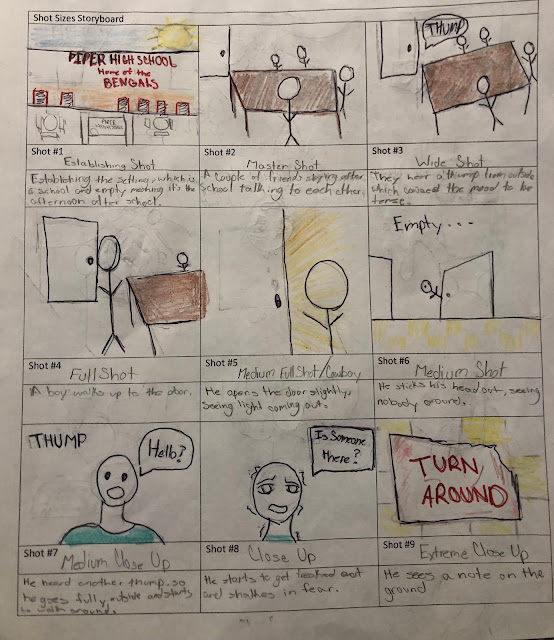Welcome everyone,
Now that I have learned about shot sizes, I would be applying my understanding of this to my film. For example, now that I know that the establishing shot is used to establish the setting, I used this shot to establish the setting of a high school. A storyboard can also be interpreted as a shot list. A shot list is the director's plan for every shot in a scene. This serves as a blueprint for what you need to film in order to have an effective film.
For this assignment I worked on it with one other person. We decided to split up the project by one of us doing the drawings and the other coming up with the action lines. We both felt that it would be best for me to the drawings in this assignment. We both collaborated together to come up with ideas on our movie and in the end decided to pick horror. We both worked very well together to come up with ideas for our movie. The next blog will be a continuation of our movie, but instead of shot sizes we would using camera angles.
Thank you for Reading!

Comments
Post a Comment